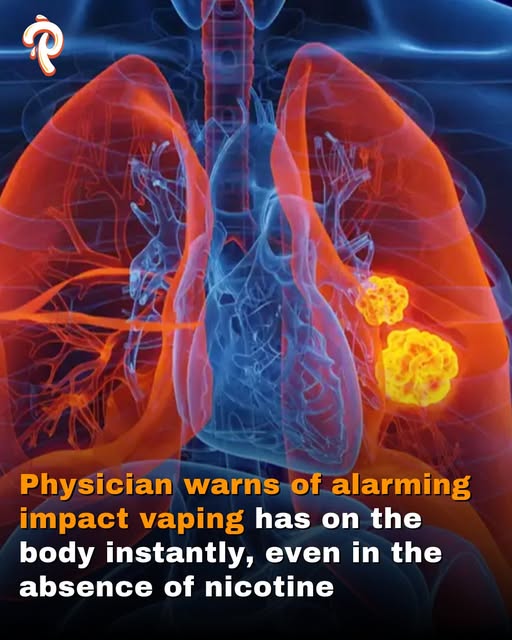A recent research effort has highlighted the effects of vaping without nicotine compared to using devices with nicotine or traditional cigarettes.
We’ve all been bombarded with information on the risks of vaping, which might have led some to resign themselves to the consequences of using those enticingly flavored vaporizers.
But if you’re searching for a compelling reason to quit, consider this study that underscores the adverse effects of vaping on your body, even without nicotine involved.
Researchers from the University of Pennsylvania conducted this study, which was published in Medical and Life Sciences, to explore the effects of vaping and smoking on the vascular system of the body.
According to John Hopkins Medicine, “The vascular system is made up of the vessels that carry blood and lymph fluid through the body. It’s also called the circulatory system.”
“The arteries and veins carry blood all over the body. They send oxygen and nutrients to the body tissues. And they take away tissue waste.”
The study involved 31 healthy smokers and vapers between the ages of 21 and 49, each undergoing two MRI scans.

One MRI was conducted before a specific ‘smoking/vaping episode,’ and the other afterward. These episodes included smoking a tobacco cigarette, using an e-cigarette with nicotine, and using an e-cigarette without nicotine.
Researchers measured participants’ oxygen flow by assessing blood flow speed and how much returned to the heart.
The findings were then compared to ‘baseline scans of 10 non-smokers and non-vapers ranging from 21 to 33 years old’.
If you thought using nicotine-free vapes was a safer option, think again.

The study indicates: “Following inhalation of each type of vaping or smoking, there was a significant decrease in the resting blood flow velocity in the superficial femoral artery. This artery runs along the thigh and supplies oxygenated blood to the entire lower body.
“The decrease in vascular function was most pronounced after inhalation of e-cigarettes containing nicotine, followed by e-cigarettes without nicotine.”
Regardless of nicotine presence, ‘decreased venous oxygen saturation’ was observed, meaning oxygen levels drop whether using a more addictive vape or not.
LHSC notes: “It indicates that the cardiac output is not high enough to meet tissue oxygen needs.” In other words, it’s detrimental.
Dr. Marianna Nabbout, study lead author and radiology resident at the University of Arkansas for Medical Sciences, stated: “This study serves to highlight the acute effects smoking and vaping can have on a multitude of vascular beds in the human body. If the acute consumption of an e-cigarette can have an effect that is immediately manifested at the level of the vessels, it is conceivable that the chronic use can cause vascular disease.”
Therefore, avoiding smoking and vaping is always advisable, whether or not nicotine is involved.
Unfortunately, there’s no easy way out.
